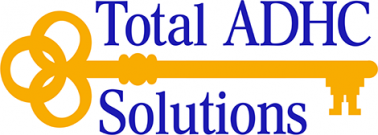Integrated Person-Centered Care in Adult Day Services; A New Model of Person-Centered Care
Applying Person-Centered Care principals, based on the theories of Carl Rogers in Adult Day Services, may appear to be deceptively simple; many believe it’s enough to include participants in the care planning process, encourage participant choice or rearrange the center’s furniture. But attempting to implement new practice models and procedures without a basic understanding of person-centered philosophy can be difficult and may be met with staff and even participant resistance. In attempting to integrate person-centered care into the adult day center, it is crucial to understand that we are really entering a new frontier.
Most of the literature available regarding person centered care, as well as the limited information on person-centered care in Adult Day Services, concentrates on providing person-centered care for those with cognitive deficits; developmental disabilities, traumatic brain injuries, Alzheimer’s disease and other dementias. In Adult Day Services though, many of us serve multiple populations, from the completely alert and oriented to those with mild to severe cognitive impairments. Old practice models, or those developed for a different industry or different populations won’t work for adult day. Because of our unique integration of populations, a new model of person-centered care developed specifically for the Adult Day Services industry is needed. I have outlined below some of the basics of this new model.
Integrated Person-Centered Care: Basics
All Person-Centered Care invites practitioners to ensure participant choice, autonomy, independence, and self-determination through the provision of positive regard and acceptance. Below I’ve listed the basic components of Integrated Person-Centered Care for Adult Day Services.
• Underlying Philosophy: Identify and fortify aspects of a participant’s life which contribute to health and independent living, recognizing and addressing those that impede the same. These aspects include but are not limited to, community supports, relationships, financial concerns, motivation, and the physical, cognitive, and emotional state of each participant.
• Team Approach. The participant is an integral and proactive member of the team who does more than just review the care plan. He or she should have major input into the goals and interventions developed during the process. The participant also holds some responsibility for the implementation of the interventions.
• Choice. Participant choice is paramount in all aspects of care and service.
• Assessment. An interdisciplinary bio-psycho-social assessment should be completed with input from all concerned parties. Utilizing this type of integrated assessment ensures that a participant is seen as a whole human being, not just a group of disparate medical/cognitive/psychological problems that must be “fixed.”
• Life Details. A participant’s past, present, and hopes for the future should be gathered during the assessment process and used to support understanding of the participant’s motivations, shore up strengths, and increase feelings of empathy from staff.
• Language. All language used in communication and documentation must reflect respect for the participant. Patronizing, infantilizing, or judgmental language should be eliminated. A participant should be referenced at all times by his or her name, not as “participant” or “wanderer/biter/screamer,” etc.
• Center Culture Change. Many centers revolve around schedules developed for the convenience of the staff or center as opposed to participant needs and choices. With center culture change, staff should feel empowered to provide services to participants as the need arises, not just because it’s “time.”
• Communication. Awareness that participants who engage in alternative action patterns (previously referred to as “behavior problems”) are attempting communication. Alternative action patterns are no longer viewed as problems to be suppressed, but as communication that requires understanding.
• Flexibility. The model must be flexible to account for the broad spectrum of challenges faced by our participants and the changes that occur on a daily basis in regards to their physical, emotional, and cognitive health, and to their financial, living, and caregiving statuses.
• Empowering. The model should empower both participant and staff to work together without strict limits as to how health and independence can best be achieved. Supporting and encouraging the creativity and innate knowledge of the best approaches to the participant’s health produces the best outcomes.
Person-Centered Care in the adult day center is achievable. Adult Day is unique on the healthcare continuum, and our model of person-centered care must reflect this individuality and specialty. Culture change such as that proposed above will take time and effort, but results will include happier participants, better outcomes, and improved staff morale and participant satisfaction—all of which should lead to greater utilization of Adult Day Services.
In future blog posts, I will address and develop more ideas relevant to incorporating Person-Centered Care into adult day services. To receive updates, click the “follow” button below.
I am pleased to announce that the first in a line of person-centered products from Total ADHC Solutions is now available, “Person-Centered Care Plan Manuals for Adult Day Services,” published in February, 2014. Please click here for more information and ordering information.
Future projects include “Person-Centered Interviews: Life Histories and Meaning” and a “Person-Centered Forms” Manual. Training Programs are also being developed on this subject.
